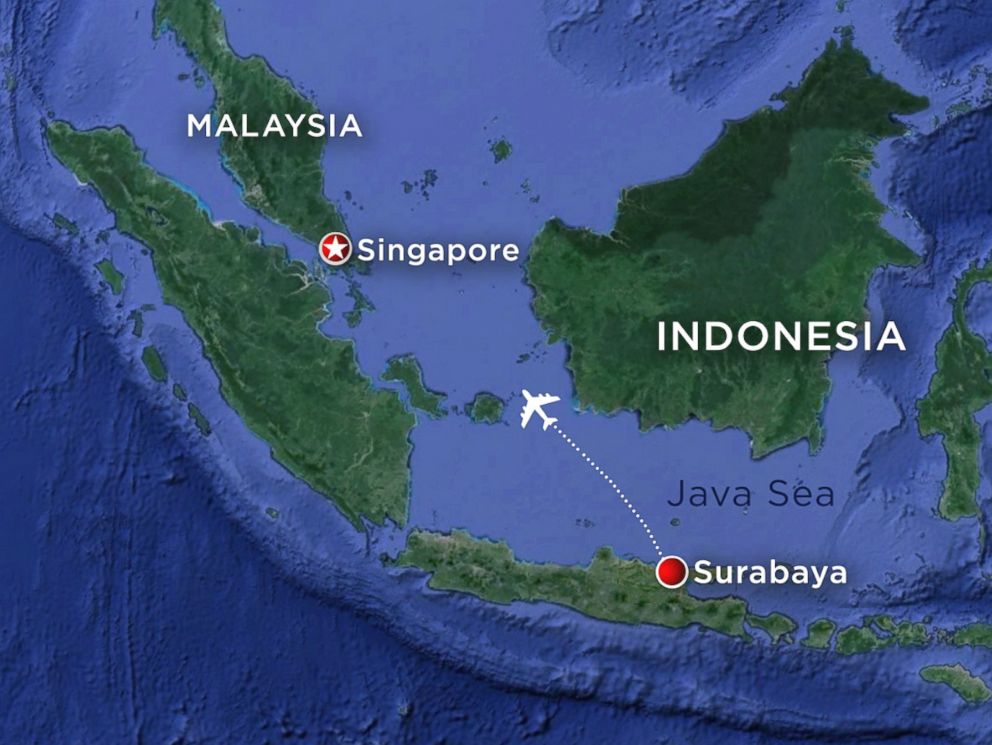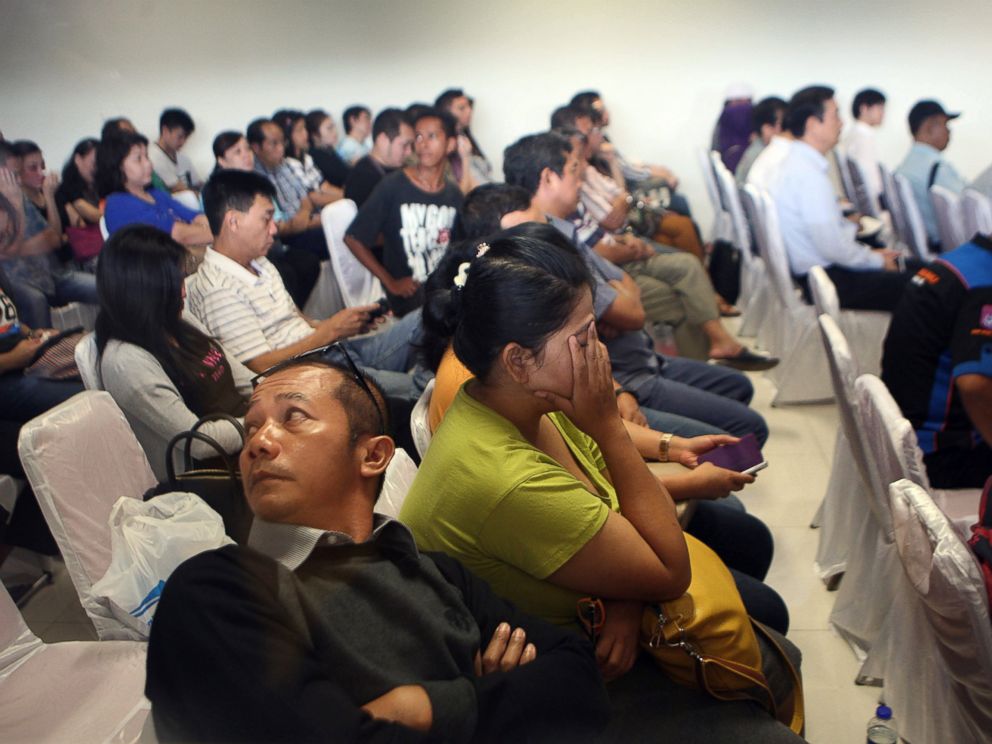More ABC News Videos | ABC World News
The search for the missing AirAsia jetliner that disappeared early Sunday over the Java Sea has been suspended for the day, with no significant breakthroughs reported, according to officials.
While the second day of searching mainly focused on the waters around Belitung Island,Indonesia, search crews plan to spend day 3 focusing on utilizing foreign vessels with sonar capabilities, officials said.
The day 3 search area will contain at least four new sectors, including ground area.
Here is a look at what we know so far:
What Happened?
An AirAsia jet lost contact with air traffic control over the Java Sea during a flight to Singapore Sunday morning, shortly after the pilots requested a change of flight plan because of weather.
Flight QZ8501, an Airbus A320-200, lost contact with air traffic control in Jakarta, Indonesia, at 6:17 a.m. Sunday local time near Belitung Island, Indonesia, after the flight left Surabaya, Indonesia, Indonesian Air Transport Director Djoko Murjatmodjo said during a news conference Sunday.
The flight had at least 162 people on board.
“We currently suspect that plane is located on the ocean floor,” Bambang Soelistyo, the head of Indonesia’s National Search and Rescue Agency, announced in a news conference on Sunday.

Where are They Searching?
Much of the search has focused largely in the waters near Belitung Island, though there have not been any significant findings in the first two days of the search.
Oil slicks were spotted near the island but experts believe that it is likely waste from ships that pass through the area regularly. All told, there are now seven search areas. Initially they were focused on four sectors but that was expanded on Monday morning.
Those sectors were determined by the initial geographic information collected from the plane before it went dark, and experts have factored in additional information that could weigh in natural conditions and weather patterns.

How is This Different Than the Vanished Malaysian Airlines Plane?
The biggest difference between these two incidents is that the search area in this latest flight is much smaller than before.
When MH370 vanished, the search area changed several times but investigators eventually determined that it is believed to have crashed somewhere in the Indian Ocean. That body of water is significantly larger, deeper, and less predictable than the Java Sea, the body of water surrounded by portions of the island nations Indonesia and Malaysia.
What About the Plane’s Black Boxes?
Like in the case of the missing MH370 plane, there is something of a deadline facing the search teams.
Black boxes have batteries that last for 30 days, with the intention that if the plane crashes, rescuers have a month to find it before they stop sending their automatic hourly signal sending out an alert to their location.
The plane’s Emergency Locator Transmitter should function automatically and send warning signals, but no signal has been detected by control centers in Indonesia or in neighboring countries.

Who is Helping?
Five countries are actively involved in the search and have contributed vehicles and manpower, though the Indonesian government is running point on the operation.
The Indonesia National Search and Rescue Agency is leading the charge with 12 ships, two helicopters, two Hercules planes, two Puma aircraft, two warships and one Boeing 737 dedicated to maritime intelligence.
Malaysia and Singapore have both deployed three ships and a Hercules plane a piece to help in the search.
The Royal Malaysian Navy and the Royal Malaysian Air Force are also actively involved in the search, and the Singapore Air Force has also helped scan the waters by both air and sea.
Two Singaporean teams of specialists and two sets of underwater locator beacons are being used to try and find the flight data recorders.
Australian forces were the ones spearheading the extended search for MH370, and they have also brought their expertise to this operation. The Royal Australian Air Force has sent aircrafts to assist the search by air.
Source: ABC News









